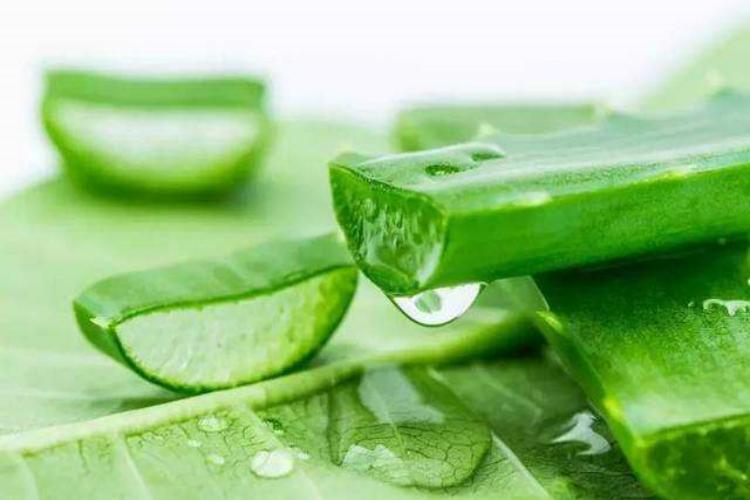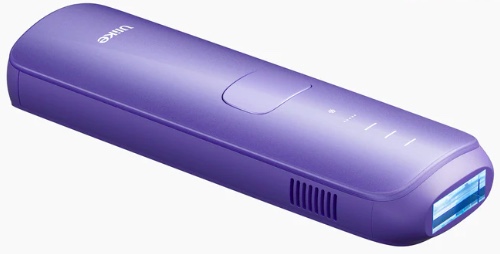Do you often get some itchy rashes on your skin along with some bumps right after you are done waxing unwanted hair? And do you also notice that these rashes are different from the allergies you get in general?
If yes, you might be suffering from a histamine reaction caused by waxing. It results because of an enhanced release of histamine in the body which is triggered by wax.
Let us understand more about this histamine reaction after waxing in this article to determine the ways to avoid and get rid of it.
Without further ado, let us dive in.
Table of Contents:
- Part 1: What is Histamine Reaction After Waxing?
- Part 2: Why do I Get Histamine Reactions After Waxing?
- Part 3: How Long Does Histamine Reaction Last After Waxing?
- Part 4: How to Treat Histamine Reaction After Waxing?
- Part 5: How to Get Rid of Histamine Reaction After Waxing?
- Part 6: Try IPL Hair Removal Rather Than Waxing
Part 1: What is Histamine Reaction After Waxing?

Histamine reaction is caused because of the increased distribution of histamine to the skin treated with waxing. It is a chemical widely present in our body that is specially released in response to a trigger to cause inflammation.
Role of Histamine in the Body
Histamine plays a vital role in our body by indicating and reducing the presence of any potential harm to the body. This harm could be in the form of trauma, allergy, infection, or diseases.
Histamine works by dilating the blood vessels, increasing the blood flow and thus the supply of immune mediators to the damaged area of the body. In short, it plays a role in inflammation.
Signs and Symptoms of Histamine Reaction
Application and removal of wax can trigger the hair follicles and result in a histamine reaction. Here are some signs and symptoms of the histamine reaction to help you diagnose and treat it at home.
- Occurrence of skin sensitivity immediately after waxing
- Erythema in the form of skin redness, swelling, and tenderness
- Hives which are actually irritating red bumps on the skin
- The presence of patches of rashes on the treated area
- Lasting of these symptoms longer than expected
If you have all these symptoms, it is sure that you are suffering from a histamine reaction after waxing and need to treat it as soon as possible.
Part 2: Why do I Get Histamine Reactions After Waxing?
While many women get allergies after waxing as mentioned in the side effects of waxing, only a few get histamine reactions. If you are one of such women, you must be wondering why me?
Histamine is a normal chemical in the body as we discussed earlier. Some people just have an intensely active immune system in contrast to the others. This active immune system reacts to the removal of unwanted hair from the body by showing a histamine reaction.
So, it is nothing more than your body’s normal response to an abnormality (hair removal with waxing in this case).
Part 3: How Long Does Histamine Reaction Last After Waxing?
Histamine reaction occurs within a few minutes after waxing. Sometimes, you only experience general redness, itchy, and allergy after waxing, not the histamine reaction.
So, only consider it if your symptoms do not subside after you are done with the aftercare of waxing.
Furthermore, histamine reactions last much longer as compared to allergies. You can expect it to go away within a day or 2. Histamine reactions can also take a longer time to subside for some people.
Part 4: How to Treat Histamine Reaction After Waxing?
Once you are sure that you have a histamine reaction, it is time to treat it. The best way to treat any illness is to reverse its pathology.
We already talked about how histamine causes vasodilation. So, you need to reverse it by causing vasoconstriction. Additionally, you need to treat the itching and redness symptomatically.
1. Cucumber
Cucumber has properties to calm and hydrate the skin. Thus, you can cut a cucumber into some slices, place it in the fridge to let it cool, and then apply it to the skin.
The application of cold cucumber slices causes the blood vessels to constrict and reduces itching as well. Also, check more benefits of cucumber at Cucumber on Face: Benefits, Side Effects, and How to Use.
2. Aloe Vera Gel
Aloe vera gel has anti-inflammatory, pore-shrinking, anti-microbial, and antiseptic properties. It can serve as your go-to option to get rid of both allergies and histamine reactions.
Simply grab aloe vera gel, apply it on the treatment area, massage it a little, and let it absorb. You will see a reduction in skin redness, inflammation, and bumps in a short time.
3. Cold Compresses
The first step and the most basic step in the treatment of histamine reaction is cold compresses. You can get an ice bag or wrap an ice cube in a washcloth for this.
Then rub the cold compress on the treated area and wait until it calms your skin down. Also, never apply ice directly on your skin.
4. Anti-Inflammatory Products
If simple household remedies do not help in the reduction and complete treatment of the histamine reaction, it is your sign to buy an over-the-counter anti-inflammatory product.
While you can take oral antihistamines, topical products work more effectively. Therefore, you can buy yourself some hydrocortisone cream or Benadryl ointment.
Additionally, some natural oils like lavender and calendula also have anti-inflammatory properties.
5. Moisturization
Along with using the options to treat skin inflammation, redness, and itching, you need to nourish and hydrate it as it helps in the healing process. Therefore, always moisturize your skin after your waxing hair removal session.
Also, pay attention to the consistency, fragrance, and formulation of the moisturizer you use after waxing. It is recommended to use a lightweight, unscented, and sensitive-skin-friendly body and facial lotion.
6. Thorough Cleansing and Gentle Exfoliation
Last but not least, clean your skin thoroughly to remove any residues of the wax. Also, exfoliate the skin to remove any broken hair strands.
However, do not use any harsh product on your skin. Get the most gentle cleanser and exfoliating agent from your drawer and use it gently on your skin as well.
Part 5: How to Get Rid of Histamine Reaction After Waxing?
No matter how many times you treat histamine reaction after waxing, it can always come back until you take the measures to put a full stop to it. So, let us talk about some tips to prevent histamine reactions in the long run.
1. Patch Test
If you are waxing your own hair at home, do not wax a large section without a patch test. Always perform a patch test in a small and hidden area of your body to see how your body reacts to the products you use and your waxing technique.
If your body does not show a histamine reaction, you are good to go. If it does, you need to consult an expert or try some gentler options.
2. Avoiding Irritants
Synthetic waxes, waxing strips, and pre and post-care products can sensitize the skin resulting in histamine reaction. Products with the consistency of harsh chemicals, fragrances, or any ingredient you are allergic to should be avoided.
Furthermore, it is better to use fragrance-free, natural, and mild waxing hair removal kits.
3. Post-Waxing Care
Whether it is a histamine reaction or allergy, you need proper post-waxing care. Clean your skin with a gentle cleanser after your waxing sessions. Then apply a lightweight yet hydrating and nourishing body lotion on the treatment area.
Additionally, you can level up your waxing post-care by applying a cold compress and exfoliating the skin 24 hours after it.
Part 6: Try IPL Hair Removal Rather Than Waxing
For people with an extremely overactive immune system, prevention can serve as the best cure for histamine reactions after waxing. However, here they need to avoid waxing in the first place to prevent histamine reaction.
The best method to stop waxing is to replace it with a better alternative. So, how about you give Ulike Air 3 IPL Hair Removal for Face, Pubic & Body Hair a try to remove unwanted hair from your body?
It is gentle, quick, and super effective in making your hair follicles dormant and preventing hair regrowth. When no hair regrows, you do not need to wax as well.
Conclusion
Histamine reaction after waxing is caused because of the excess release of histamine in the blood circulation. It irritates the skin and makes it look bumpy. You can treat histamine reaction by applying cucumber, aloe vera, and cold compresses on it.
Furthermore, you can prevent it by trying a patch test, paying attention to the ingredient list of your waxing kit, and following post-waxing care.

 By Viktoria
By Viktoria








